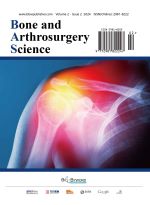Abstract
Objective: To investigate the effect of minimally invasive locking plate internal fixation on fracture healing and functional recovery in patients with proximal humerus fractures. Methods: 98 patients with proximal humerus fractures admitted to the hospital from August 2021 to July 2023 were selected and divided into the control group (n = 49) and the observation group (n = 49) according to the lottery method. The control group implemented conventional treatment, and the observation group implemented minimally invasive locking plate internal fixation. The treatment effect and complications, surgery-related indexes, and functional recovery of the shoulder joint in the two groups were compared. Results: Compared with the control group, the observation group (97.96%) had a better therapeutic effect than the control group (73.47%) (χ2 = 12.000, P < 0.05); the complication rate of the observation group (2.04%) was lower than that of the control group (18.37%) (χ2 = 7.127, P < 0.05); the fracture healing rate of the observation group (97.96%) was higher than that of the control group (81.63%) (χ2 = 7.127, P < 0.05). The operation time of the observation group (74.25 ± 10.30 minutes) was shorter than that of the control group (115.63 ± 20.30 minutes) (t = 12.725, P < 0.05), the intraoperative bleeding of the observation group (177.30 ± 19.63 ml) was less than that of the control group (306.63 ± 30.62 ml) (t = 24.890, P < 0.05). The fracture healing time was shorter in the observation group (12.30 ± 2.30 weeks) than in the control group (16.23 ± 2.66 weeks) (t = 7.823, P < 0.05), and the hospitalization time was shorter in the observation group (9.30 ± 0.99 days) than in the control group (12.66 ± 2.20 days) (t = 9.749, P < 0.05). Compared with the control group, the pain, muscle strength, activity function, and activity score of the observation group were significantly different (t = 6.398, 12.817, 8.386, 7.892, P < 0.05); compared with the control group, the observation group’s abduction, forward flexion, external rotation, internal rotation, and posterior rotation were significantly different (t = 3.042, 2.843, 3.633, 4.669, 9.176, P < 0.05). Conclusion: Minimally invasive locking plate internal fixation for proximal humerus fracture can adjust its surgery-related indexes, increase the patients’ shoulder joint mobility, enhance the shoulder joint function, improve the fracture healing rate and therapeutic effect, and reduce the complications, which is worth recommending in clinical practice.
References
Yang C, 2018, Effect of Minimally Invasive Locking Plate Internal Fixation Treatment on Fracture Healing and Functional Recovery in Patients with Proximal Humerus Fracture. Modern Diagnosis and Treatment, 29(5): 758–759.
Xu D, Ji M, 2024, Deltoid Nodal Index Combined with Preoperative Factors to Construct a Risk Prediction Model for Internal Fixation Failure of Locking Plates in Proximal Humerus Fractures in the Elderly. Chinese Tissue Engineering Research, 28(21): 3299–3305.
Wang Y, Wu Y, 2024, Correlation Between Postoperative Function and Imaging Indexes in Anatomical Locking Plates for Proximal Humerus Fractures. Imaging Research and Medical Application, 8(2): 65–67.
Hu L, Luo Y, Huang J, 2024, Distribution Characteristics of Humeral Head Screws in Proximal Humerus Fractures Treated with Proximal Humeral Locking Internal Fixation System Plates. Chinese Tissue Engineering Research, 28(24): 3850–3854.
Lin J, Huang B, Liao B, 2023, Clinical Effect Analysis of Minimally Invasive Locking Plate Internal Fixation for Proximal Humerus Fracture. Chinese and Foreign Medical Treatment, 42(9): 45–48 + 53.
Ren Y, Wang J, Zeng W, 2018, Effect of Minimally Invasive Locking Plate Internal Fixation in Treating Proximal Humerus Fracture and Its Influence on Patients’ Fracture Healing Time. Clinical Medicine Research and Practice, 3(29): 52–53.
Zhou Z, Huang K, Yang T, 2023, Study on the Clinical Effect of Two Minimally Invasive Plate Internal Fixation Techniques for Proximal Humeral Stem Fracture. Chinese and Foreign Medicine Research, 21(34): 39–42.
Liu D, Wang Y, 2023, Efficacy Analysis of Locking Plate Internal Fixation for Proximal Humerus Fracture by Deltoid Split Approach. Primary Medical Forum, 27(31): 39–41 + 64.
Dai L, Ma C, 2023, Efficacy of Proximal Humerus Locking Plate Combined with Minimally Invasive Technique in the Treatment of Comminuted Proximal Middle Humerus Fracture by Anterolateral Approach. Contemporary Medicine, 29(1): 36–39.
Zhang W, Jiang X, Liu W, 2014, Analysis of the Efficacy and Follow-Up Results of Minimally Invasive Locking Plate Internal Fixation for the Treatment of Proximal Humerus Fracture in the Elderly. Laboratory Medicine and Clinics, 11(3): 315–317.
Hu L, Luo Y, Huang J, et al., 2024, Distribution Characteristics of Humeral Head Screws in Proximal Humeral Locking Internal Fixation System Plates for Proximal Humeral Fractures. Chinese Tissue Engineering Research, 28(24): 3850–3854.
